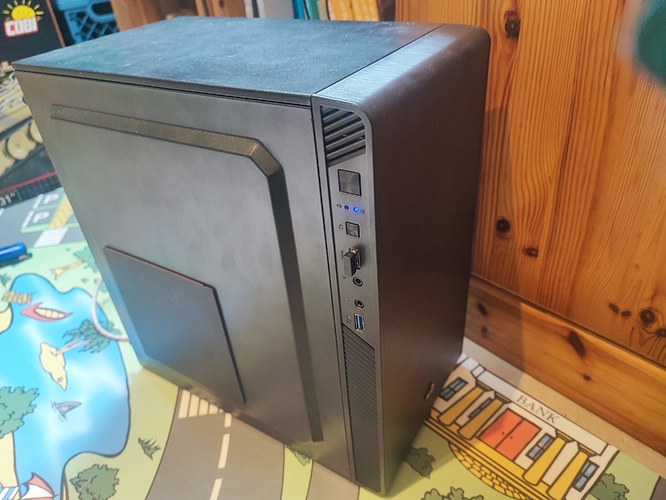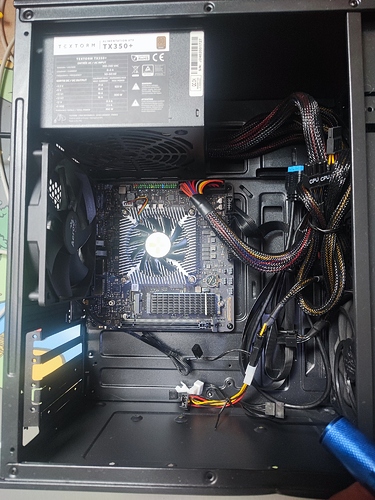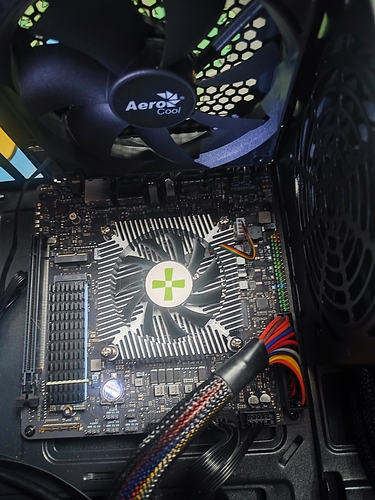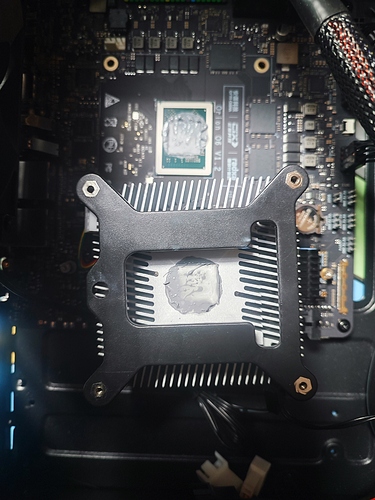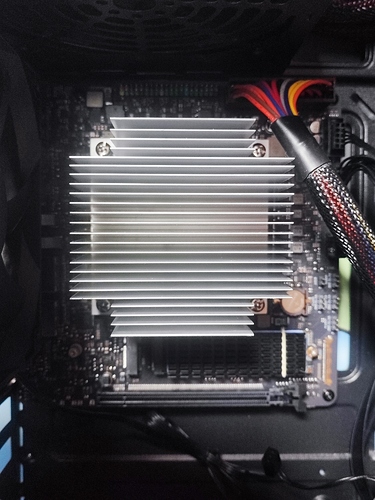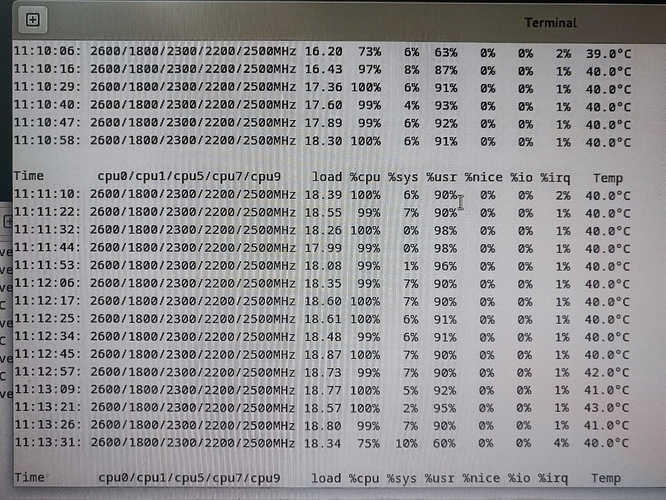Now the new passive heatsink is in place, with a generous ‘nut’ of Noctua NT-H1 thermal paste. I forgot to show the back of the heatsink, but the contact surface is half of the total area, with two ‘grooves’ on sides, so the contact is on a centered rectangle. Also, the contact surface is a bit rough, at least compared to the Radxa cooler.
I chosed the horizontal orientation for the fins in my test, assuming they are roughly aligned with the case air flow. I think the vertical orientation is also possible, for pure passive conditions for instance, but the heatsink really touches the plastic CPU fan plug whatever the choice!
Placement is a bit tricky as you have to carefully place and push the heatsink while fixing it on the provided backplate
Finally, here are the results of my tests:
Room temperature: 24°C
Idle power (no significant difference with CPU fan): 21W
Radxa stock cooler
- Idle temperature: 32~33 °C
- Peak temperature: 50 °C (after 5~10 minutes load)
- Max power: 35 W
Passive 2U cooler
- Idle temperature: 28~29 °C
- Peak temperature: 42~43 °C (after 10~15 minutes load) - see next picture
- Max power: 32 W
The difference between idle and load power looks strange, there is only a 10-13 W difference I can’t explain, maybe the measurement is very imprecise, but I was expecting more… Also, the max power consumption was 3W higher with stock cooler at load, I can’t explain this either, so please do not take these numbers for granted, it is simply not very reliable. Temperatures may not be precise either, these come from the chip sensors, but I guess the comparison between the two coolers still makes sense.
Even if the thermal paste applied on the stock cooler is not very efficient and lower temperatures might have been achieved with the Noctua paste, the passive heatsink shows a much better behavior and I had to relaunch the packer for an asymptotic value: just 10 degree difference while the stock cooler allows almost the double.
So, if I have to choose between the two coolers, the passive solution is of course better with a decent case air flow. No doubt that the stock cooler is sufficient for most users, but in server conditions, I would not be confident in a small CPU fan.
So, yes, I definitively recommend this aluminium passive heatsink, except maybe in pure passive conditions (additional tests would be required).
I hope this can help…
